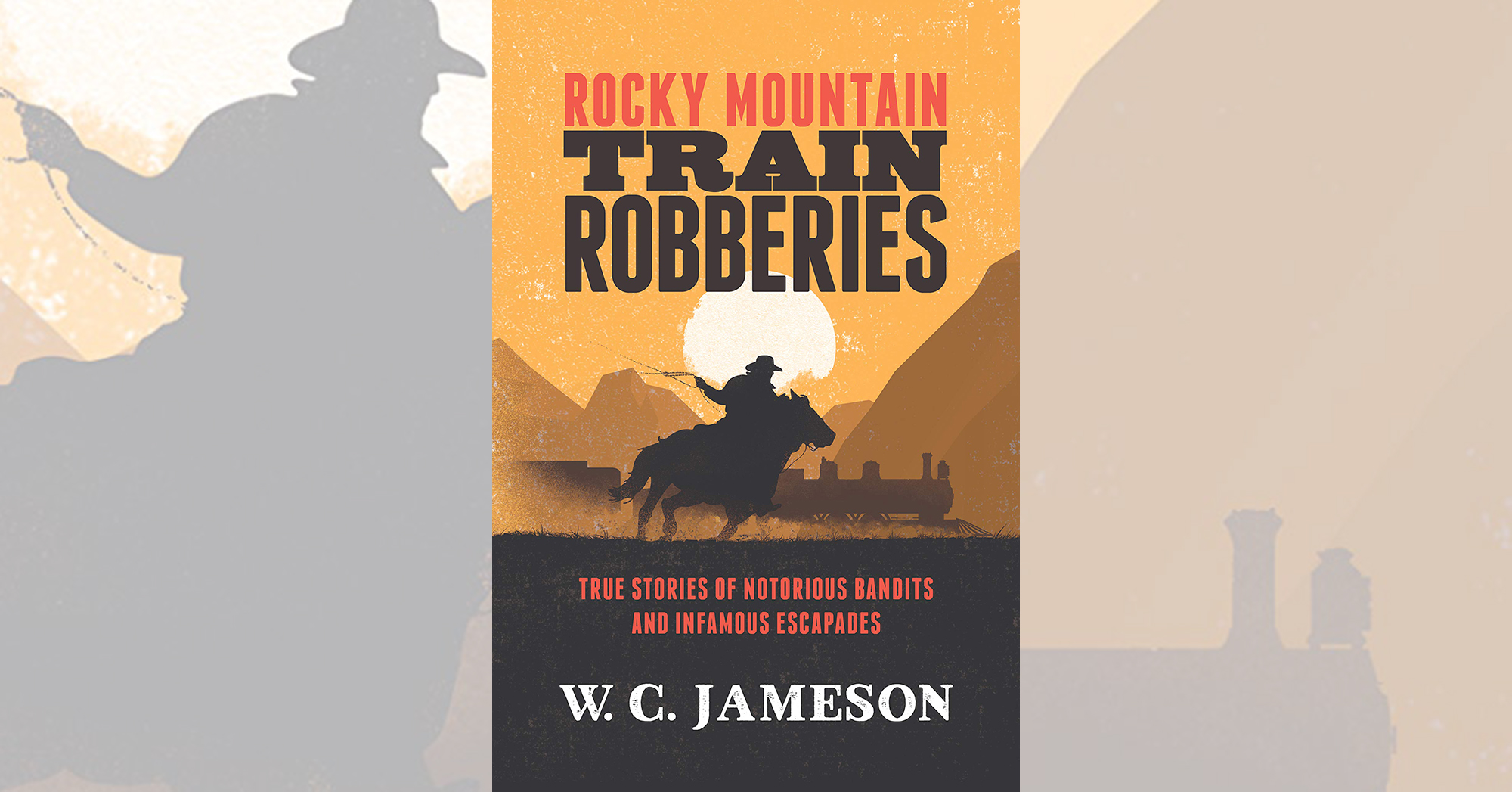Rocky Mountain Train Robberies: True Stories of Notorious Bandits and Infamous Escapades, by W.C. Jameson, TwoDot, Helena, Mont., 2019, $16.95
Prolific author W.C. Jameson covers this fertile ground—Arizona, Colorado, Idaho, Montana, Nevada, New Mexico and Wyoming—on a fast track, like an express train racing through the Rockies and not lingering long at any station. Some of his offerings are rather sketchy, mainly because certain robberies were in remote areas and got little press coverage, but overall the author provides interesting information about a selection of the West’s most notable outlaw train heists, from the one at Verdi, Nev., on Nov. 4, 1870 (said to be the first such robbery west of the Mississippi River), to the one at Deming, N.M., on Nov. 24, 1937 (by two wannabe outlaws, including one whose parents said possessed a “Wild West complex”).
In his introduction Jameson writes that when most people think of train robberies, the outlaws that come to mind are Butch Cassidy and the Sundance Kid, Harvey “Kid Curry” Logan, the Dalton Gang, the Doolin Gang, and Frank and Jesse James. Butch, Sundance and Logan, of Wild Bunch notoriety, are well represented here, although, as Jameson notes, exactly which robberies the trio was involved in are subject to debate to this day. The Daltons and Doolins aren’t mentioned again, as they were involved in train robberies but not in the designated Rocky Mountain West. Same goes for the James brothers, right? Not quite. Jameson claims Frank James teamed up with George “Big Nose” Parrott and others to rob the westbound Union Pacific No. 3 at Carbon, Wyoming Territory, on June 2, 1878 (other sources state mid-August 1878). “James, who was using the alias McKinney,” writes the author, “operated mostly in the background as the planner of the robbery and placed Parrott in charge of pulling off the heist.” Readers will certainly wonder about Frank’s involvement (and where his brother Jesse was at the time) but will find no more information about it in the book.
Jameson’s stances on a number of historical issues go against the grain, and they turn up on several occasion. In his chapter “The End of Butch Cassidy, Train Robber,” Jameson restates his case that Cassidy didn’t die in Bolivia but returned to the United States (not to rob more trains, however), and the author adds that the details of that “truth” are available in his 2014 book Butch Cassidy: Beyond the Grave. In Rocky Mountain Train Robberies Jameson mentions Pat Garrett once and introduces him as the man “who claimed to have killed Billy the Kid,” which is fitting, as Jameson has long insisted the infamous killing didn’t really happen, as spelled out in his book Billy the Kid: Beyond the Grave. Jameson, who has written at least 36 books in his popular Buried Treasures of America series, points out that the loot from a few of his 37 train robbery accounts remains buried out there in the Rockies. The prolific author doesn’t always sort out the truth, but it’s a fast, fun ride.
—Editor





